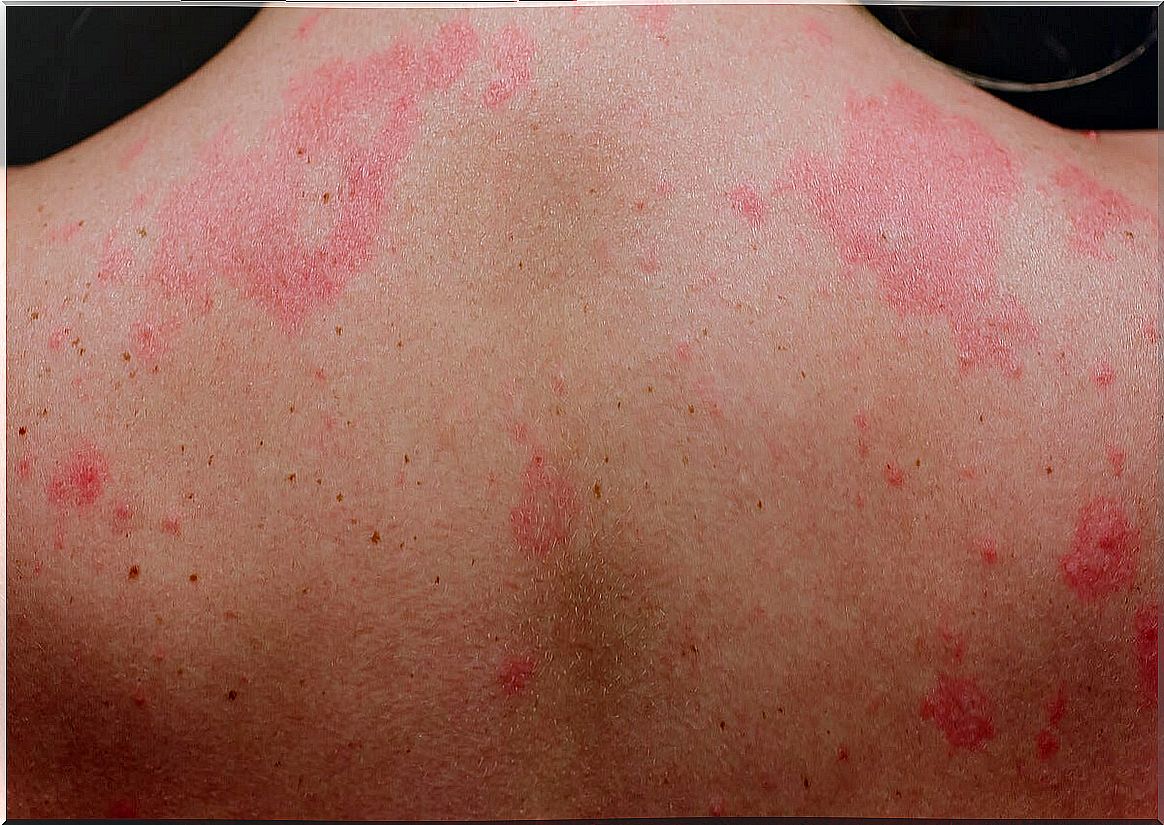Allergy To Cats And Dogs: What Causes It?
Millions of people around the world suffer from allergies to different substances, such as food or drugs. Some have allergies to cats and dogs, making it impossible for them to have a pet.

Pets can be the best company for many people, with canines and felines being the most popular animals. However, some are limited to sharing with them due to the health reactions they produce. Are you interested in knowing what causes allergies to cats and dogs? We will tell you.
Allergies are exaggerated reactions of the immune system against external agents or elements that are considered harmful. These conditions are usually linked to genetics and the structural characteristics of each person. In addition, its appearance carries a wide variety of implications on the quality of life.
Domestic animals often release their own cells or substances into the environment. They trigger an inappropriate immune response when they come into contact with the susceptible person. The symptoms associated with allergy to cats and dogs is varied.
How does an allergy to cats and dogs occur?
Allergic reactions from pets often present similar to other forms of allergy. Foreign bodies or allergens induce various symptoms according to the organ that comes into contact and the time of exposure. In this sense, allergic patients experience local or systemic manifestations.
The local ones are evident at the level of the skin, mucous membranes and the upper respiratory system. Some of the symptoms that stand out in patients with allergies to cats and dogs are the following:
- Sneezing
- Red, watery eyes.
- Stuffy and runny nose.
- Dry cough.
- Itching or itching of the nose and skin.
- Blisters or hives.
- Reddened skin
On the other hand, when the hypersensitivity response is very exaggerated, it can induce changes at the systemic level. They have serious consequences for the patient and must be identified and treated in time.
Among these types of symptoms, the following stand out:
- Shortness of breath
- Chest pain or tightness
- Whistling that is emitted when breathing.
- Decreased blood pressure.
- Palpitations
- Nausea, dizziness, and vomiting.

Is hair the culprit in cat and dog allergies?
Despite what most people think, pet hair is not responsible for allergic reactions. For its part, it is the dead cells or dander shed from the animal that are associated with this type of immune response.
Dandruff particles can linger in the air and in rooms for a long time. This explains why a person has allergy symptoms in a room, even though the pet is not in it. In addition, the particles can adhere to clothing or other objects and be transported to the susceptible patient.
Similarly, it is possible to develop an allergy response due to exposure to proteins present in the saliva and urine of cats and dogs. These come into direct contact with the person or are transported through the air to the mucous membranes, where they are recognized as allergens.
Are there hypoallergenic pets?
At present, there is a group of breeds of dogs and cats that are considered hypoallergenic, that is, they do not produce an allergy response in the susceptible patient. However, this hypothesis lacks a scientific basis.
Every pet is capable of producing allergens. Some animals may not release the same amount of particles, yet they are there.
On the other hand, patients with allergies to dogs and cats who have symptoms only with certain breeds have been identified. This fact is explained by the body’s ability to adapt to a constant stimulus and the ability of some breeds to release a lower level of antigenic elements into the environment.
How to control the symptoms of allergy to cats and dogs?
The main tool to prevent and control the symptoms associated with pet allergies is to avoid, as much as possible, contact with them. Therefore, if you have a dog or cat at home that is causing the symptoms, you should consider giving it to a relative or acquaintance.
By reducing exposure to the causative pet, the manifestations should gradually decrease. However, it is impossible to completely eliminate contact with animals outside the home due to the adherence and transport of particles in the air or clothing.
On the other hand, there are medical and pharmacological methods that can be used to control allergy symptoms:
- Antihistamines.
- Decongestants.
- Corticosteroids
- Leukotriene modifiers.
A well-known method for the treatment of these reactions, when others fail, is immunotherapy. This consists of the progressive application of allergen vaccines, which increase their dose gradually until the body develops immunity.

Lifestyle and recommendations with pets
In most cases, the family’s attachment to pets prevents ceasing exposure to their allergens. In these situations, it is advisable to apply lifestyle changes to slow down and avoid symptoms and complications.
Among the personal care recommendations given by the American College of Asthma, Allergies and Immunology, the following stand out:
- Keep the pet away from the rooms crowded by the allergic person. This will limit the spread and contact with the detached particles.
- Avoid contact with animals, either through caresses, kisses or hugs. If you do, it is advisable to wash your hands with plenty of soap and water.
- Use high-efficiency particulate air cleaners (HEPA) in the different rooms of the home. They reduce a large percentage of the allergens present in the air.
- Clean the home regularly with high-capacity vacuum cleaners.
- Continuous baths for the pet, at least once a week, to reduce the release of dander and cells.
Prevention and care to enjoy pets
Symptoms of allergy to cats and dogs can appear at any time in life. Some patients manifest reactions during childhood, so they should be alert to any alarming symptoms that require immediate attention.
Similarly, one’s own or family history of allergy to food, drugs or other elements should not be underestimated. Faced with this situation, it is advisable to keep exposure to new substances or environments limited and to devise periodic medical monitoring.









